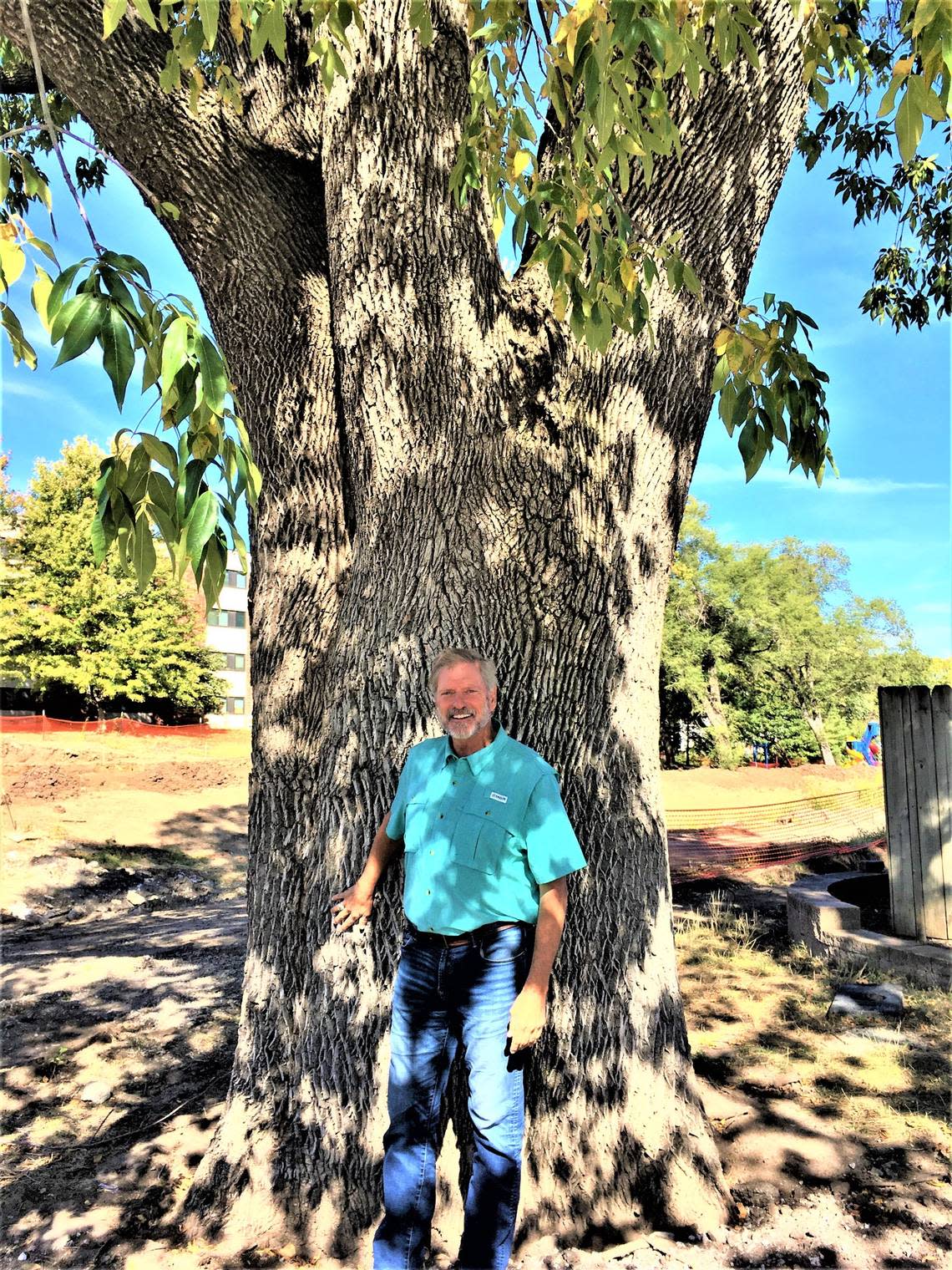Champions of forests — and burbs. These Johnson County trees stand the test of time
Color, character and championships — Johnson County trees have it all.
The county’s annual autumn brilliance may be delayed and dulled by drought this year, but the trees have much to offer in other ways.
Consider, for example, the trees recognized not for seasons of color but for decades of resilience and majesty: The Kansas Champion trees.
Of 144 Champion Trees on the 2022 list, Johnson County is home to 28.
“It’s taken years of growth and love to make a champion tree,” said Dennis Patton, horticulturist at the Johnson County K-State Research and Extension Office.
The list of champion trees is managed by the Kansas Forest Service in Manhattan. Trees are nominated for the honor and verified by volunteers who measure a tree’s height, circumference and canopy.
The champions grow in parks, cemeteries, front lawns, backyards, campgrounds, parking lots — wherever they put down roots years ago.
There’s even one growing where it might be expected — on the grounds of Family Tree Nursery in Overland Park. It’s a well-loved champion shingle oak.
“This tree was in my grandparents’ front yard,” said Jonah Nelson, a third-generation owner of the nursery.
Nelson’s grandfather planted the tree in 1908. Though his house and the cornfields are gone, the oak sapling is now a towering 80 feet tall.
His grandfather’s front yard became part of the family’s garden center in 1964.
And the oak tree has seen it all and thrived in the care of family arborists.
This month, for example, Nelson saw the effect of heat stress on the shingle oak and began treating the tree with an extensive three-phase plan for additional nutrition.
Nelson said he will sell a shingle oak if a customer wants one, but that doesn’t happen often: “In Johnson County, we average 100 maples to one oak sold.”
It’s all about the drama of fall color.
The leaves of Nelson’s champion oak transition from green to yellow to brown — drab compared to the fiery red and gold display of a maple.
It isn’t color but character that Rick Spurgeon admires in a tree.
“I am not a fan of upright trees,” said Spurgeon, who retired as an arborist for the City of Olathe in 2020 after a 38-year career.
Drive around to the back of the Olathe Community Center and it’s easy to understand Spurgeon’s preference.

Branches of massive Northern red oaks not only stretch to the sky but also bow low to the ground. Some boughs touch the ground and extend outward for several feet.
“The tree of knowledge” is the nickname Jared Doran has given the largest of these special oaks.
Doran is Olathe’s arborist and the “tree of knowledge” is his favorite of all the trees in Olathe. It’s earned the nickname because “I feel inspired when I sit beneath it.”
The trees were planted in the 1920s and the family living there let them grow without pruning, Spurgeon said. He found beauty in the irregular shape and resisted trimming the low-growing branches.
JoCo’s tree pride
Of Johnson County’s 28 trees on the Kansas Champion Tree list, Spurgeon nominated 15 of them.
He nominated the green ash at Mill Creek Park several times before it was declared the state champion.
About 30 years ago, the trunk of the ash began separating, which can weaken a tree. Spurgeon had the tree cabled to protect its strength and status as a champion.
A champion can be dethroned if it loses height through storm damage or falls victim to development — or a competing tree grows wider or taller.
The life of the state champion Osage orange tree in Olathe was spared when a parking lot was poured around it at the new Johnson County Courthouse. But the tree lost its championship to a bigger Osage orange in Emporia.
To be ready when a state champion needs to be replaced, the Kansas Forest Service maintains a database of trees nominated over the years.
“Since 2000, 550 trees have been nominated,” said Darci Paull, who coordinates the Champion Tree program for the Kansas Forest Service. The forest service has been maintaining a record of the largest trees by species across the state since the 1960s.
The record serves no practical purpose except to make people feel good, Paull said.
“People enjoy looking at big trees.”
To see the complete list of Kansas Champion Trees, click on www.kansasforests.org/discover_kansas_forests/championtrees.html
